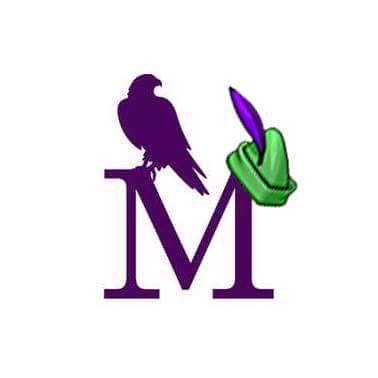ENG 419: Spring 2018
Student projects for Spring 2018 (ENG 419: Special Topics in Genre) include the following:
Kayla, Robin Hood's Progress to Nottingham
Exhibit Summary: Language is a common tool for discrimination. Slurs about race, sexuality, and religion stand out to us almost immediately, but we have become desensitized to ableist language. Due to this desensitization, discriminatory words or phrases about people with disabilities are not always so obvious. I use the ballad Robin Hood’s Progress to Nottingham to address the ways in which ableist language can work in literature.
Kayla, Robyn and Gandelyn
Exhibit Summary: This exhibit functions as a platform in which I address how aggression and acts of violence among males can be linked to untreated forms of anxiety and depression. Using “Robyn and Gandelyn” as a cautionary tale, I demonstrate how the psychological distress displayed in the youths as well as the violent acts which result are a product of toxic societal standards of masculinity. Males may often feel that they must prove themselves through violent acts of aggression in order to be validated by society. It is my intention that this will provide greater access to acceptance and assistance for those dealing with anxiety and depression as a result of a failure to meet flawed standards. Additionally, this exhibit proposes a solution to these problems so that these issues are not perpetuated.
Ezra, The Death of Robin Hood
Exhibit Summary: Representation for people living with mental and neurological disorders is a field of growing concern for many in contemporary society; however, people living with ADHD as a subset of this minority are often overlooked and misdiagnosed with incredible frequency. The Robin Hood ballads, and more specifically, "The Death of Robin Hood" fill a void of representation and through reading Robin in this way, audiences of all abilities can learn to appreciate the naunces of the symptoms and perhaps elevate general knowledge of the disorder as a whole.
Hannah, Robin Hood and the Beggar II
Exhibit Summary: Robin Hood can often be found with a community, one that he has chosen himself and who supports him and each other throughout the ballads. This level of support is tested in “Robin Hood and the Beggar II,” and such a test can be used as a framework to analyze the importance of a personalized and self-derived community for people with disabilities, as opposed to institutionalized care.
Jalen, Queering Robin Hood
Exhibit Summary: Scholars often discuss the large amount of violence and homoerotic undertones of the Robin Hood ballads, however, few have explicitly studied the ballads with a queer intersectional framework. This exhibit suggests that in reading the ballads with a queer intersectionality, scholars can begin to unpack what this violence means. As I reveal, queer intersectionality offers room for conversations about gender, sexuality, and disablity all at once.
Katie, Robin Hood's Fishing
Exhibit Summary: My exhibit aims to contribute to the conversation surrounding physical disability transportation concerns. The exhibit examines the Robin Hood ballad “Robin Hood’s Fishing” as a means of evidencing this lack of transportation accommodations, as well as the constant ridicule they face from the public. The individual components of the exhibit provide the original ballad, an audio recording, and slightly modernized translation. A close reading of the ballad serves to provide commentary and an alternate way of reading the text, in an effort to halt the perpetuation of ableist thinking against the physically disabled.
